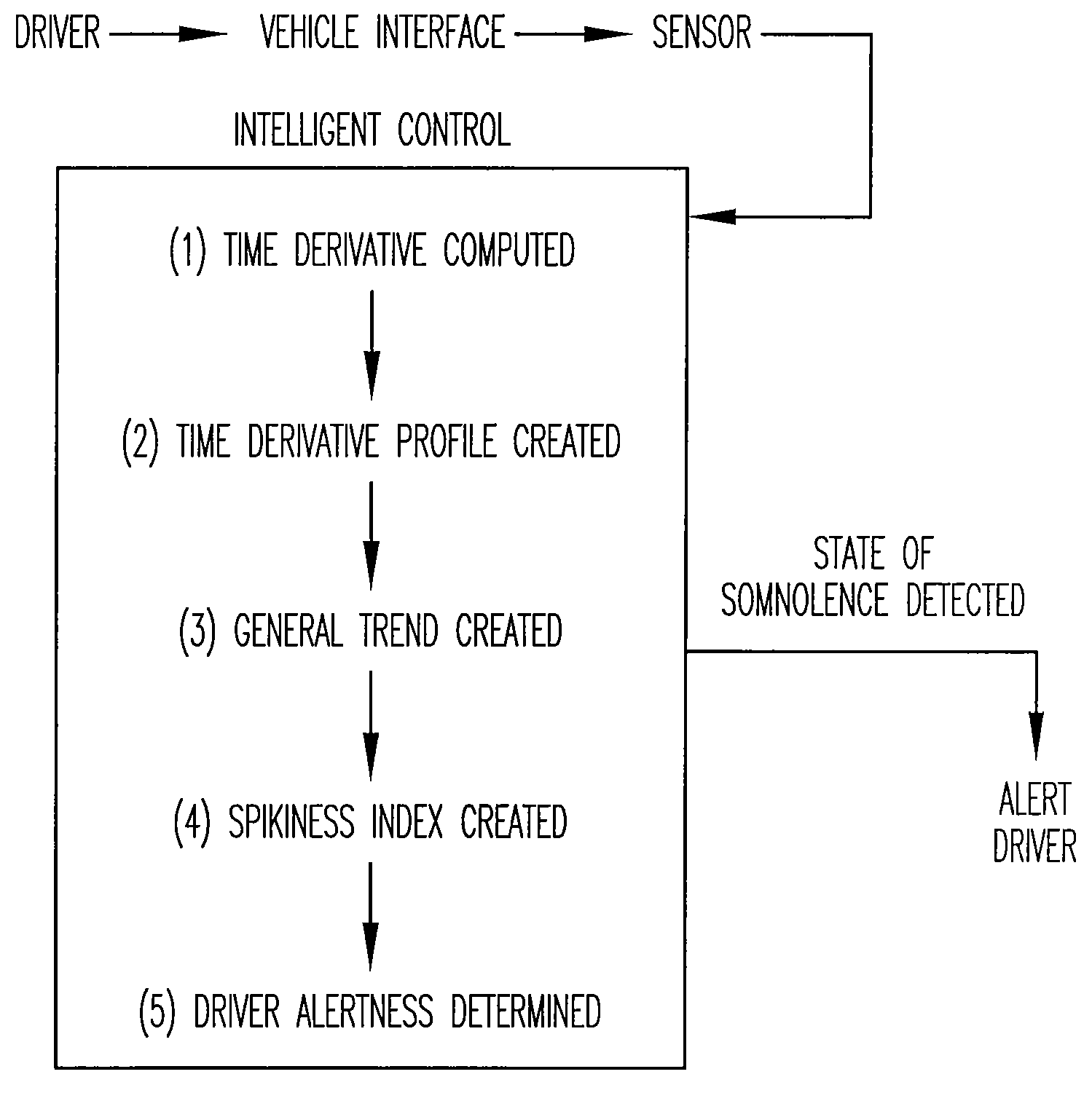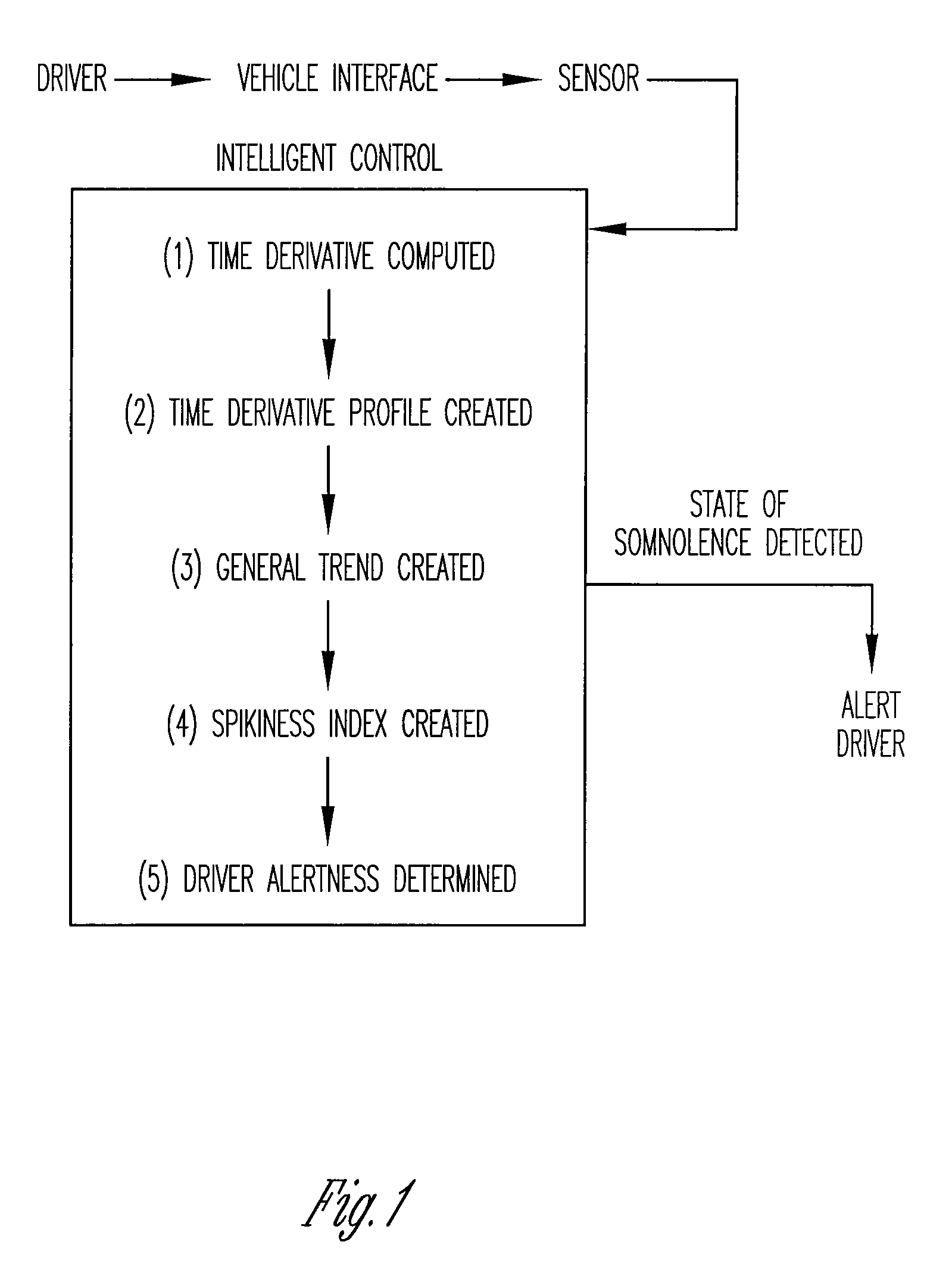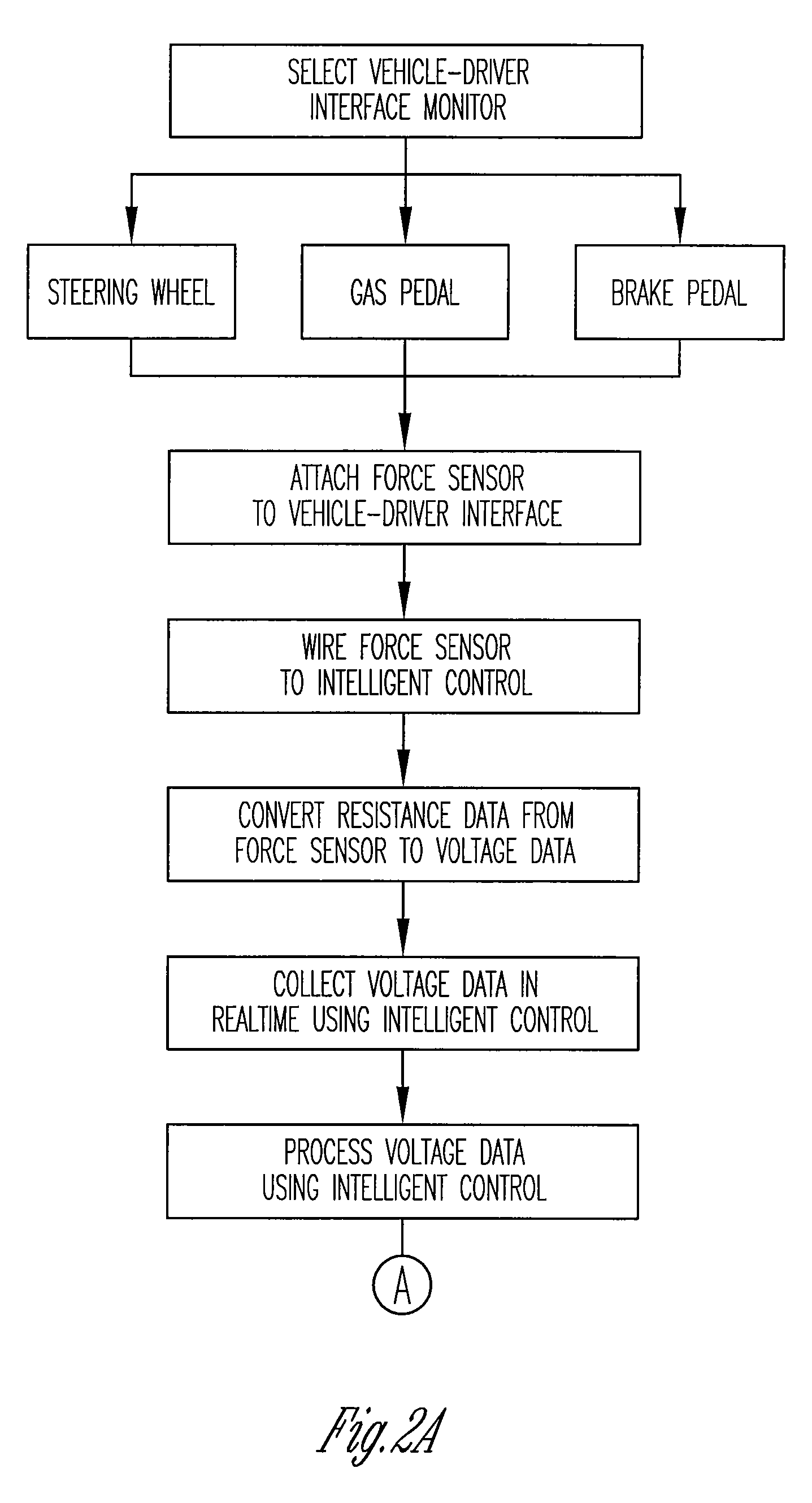Vigilance monitoring technique for vehicle operators
a vehicle operator and monitoring technique technology, applied in the field of vehicle operator monitoring technique, can solve the problems of increased risk of drowsiness detection, increased financial costs as a result of injuries and deaths, and increased risk of accidents
- Summary
- Abstract
- Description
- Claims
- Application Information
AI Technical Summary
Benefits of technology
Problems solved by technology
Method used
Image
Examples
Embodiment Construction
[0063]The present invention relates to a vigilance monitoring system for measuring a driver's level of alertness. That which is disclosed herein is merely exemplary or representative of the present invention. The present invention is not to be limited to the specific disclosure provided herein.
Vigilance Monitoring Technique
[0064]As shown in FIG. 1, the present driver vigilance monitoring technique monitors the time derivatives of the force and / or displacement profile of the driver's contact with accelerator and / or other driver-vehicle interface, such as the steering wheel and brake to monitor the alertness of the driver. A sensor in the preferable form of a force and / or displacement sensor is attached to the accelerator and steering wheel; the accelerator and steering wheel being the preferred driver-vehicle interfaces to monitor. The force sensor is in form of a thin polymer foil attached to the accelerator pedal, which makes the system non-intrusive to the driver and allows data a...
PUM
 Login to View More
Login to View More Abstract
Description
Claims
Application Information
 Login to View More
Login to View More - R&D
- Intellectual Property
- Life Sciences
- Materials
- Tech Scout
- Unparalleled Data Quality
- Higher Quality Content
- 60% Fewer Hallucinations
Browse by: Latest US Patents, China's latest patents, Technical Efficacy Thesaurus, Application Domain, Technology Topic, Popular Technical Reports.
© 2025 PatSnap. All rights reserved.Legal|Privacy policy|Modern Slavery Act Transparency Statement|Sitemap|About US| Contact US: help@patsnap.com



